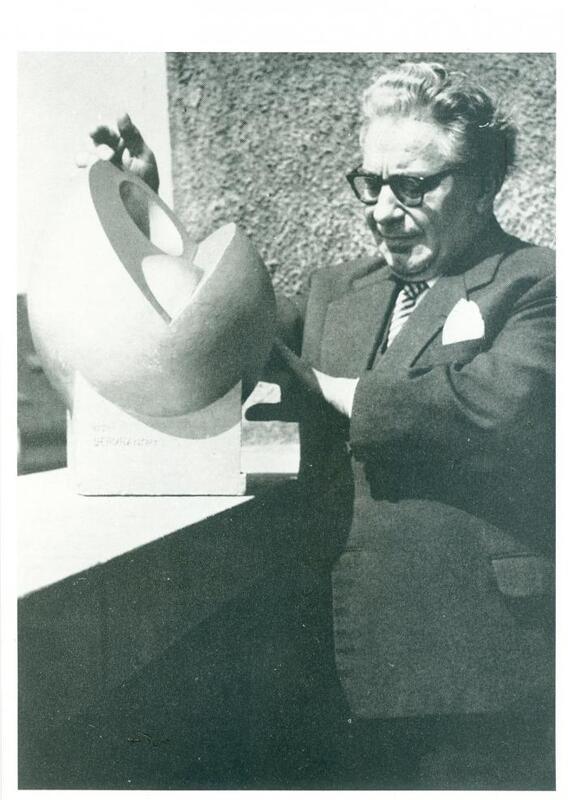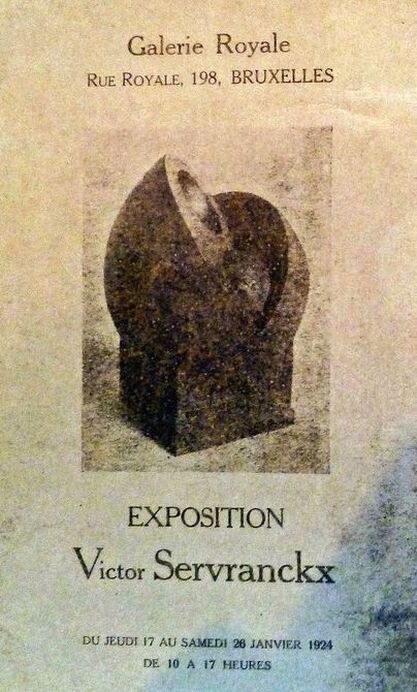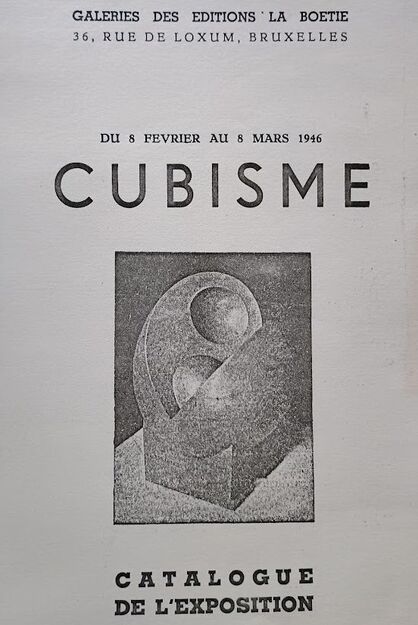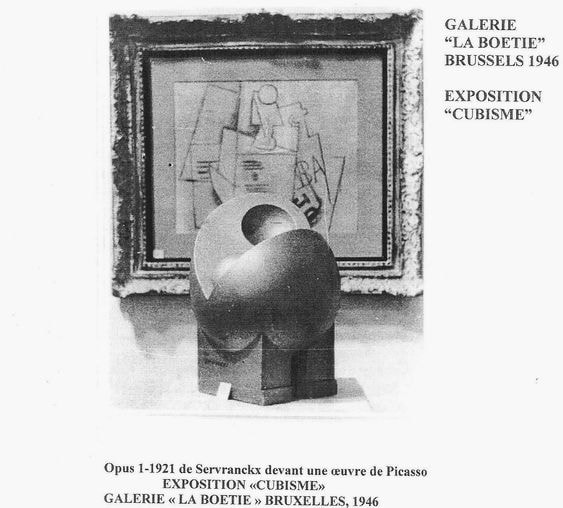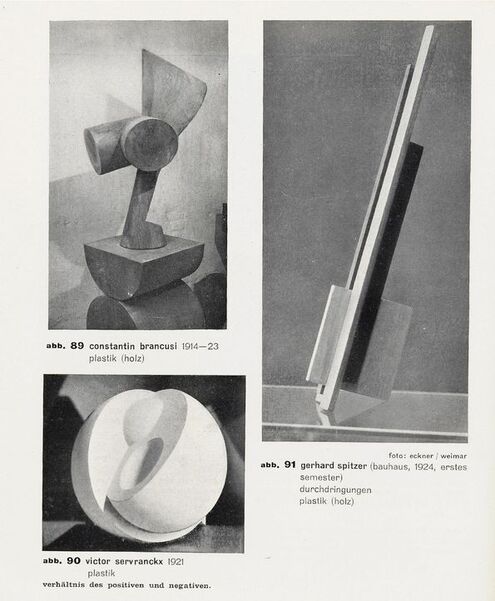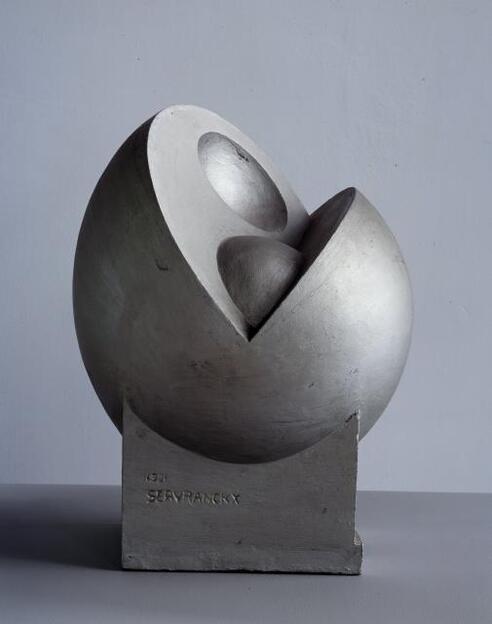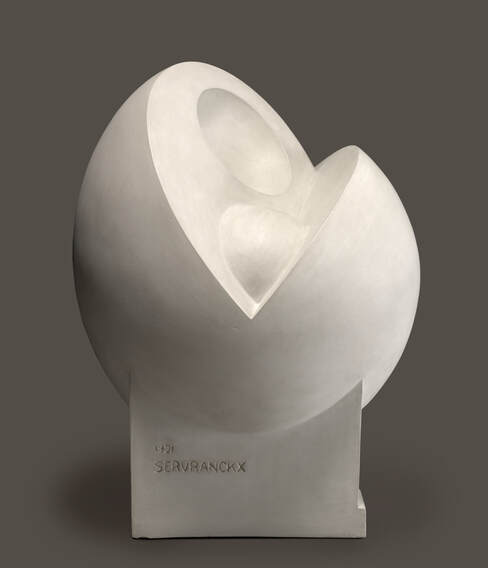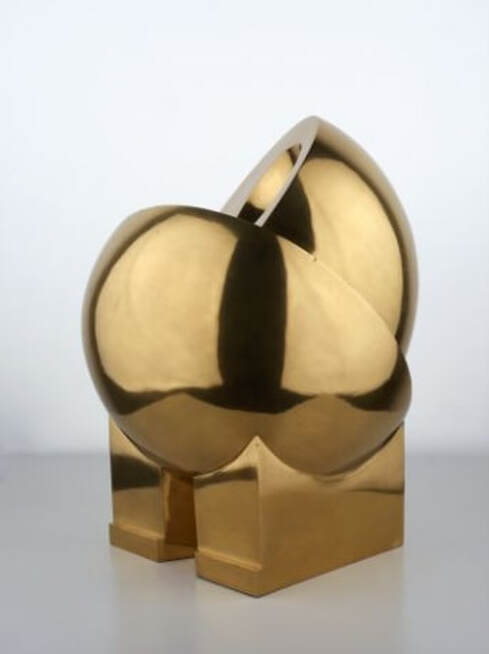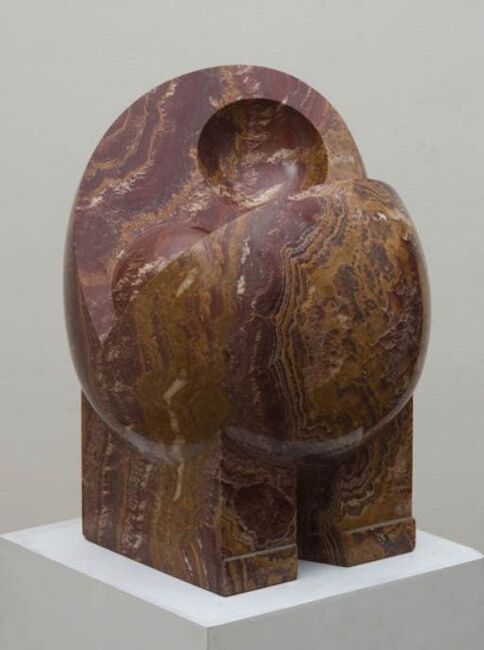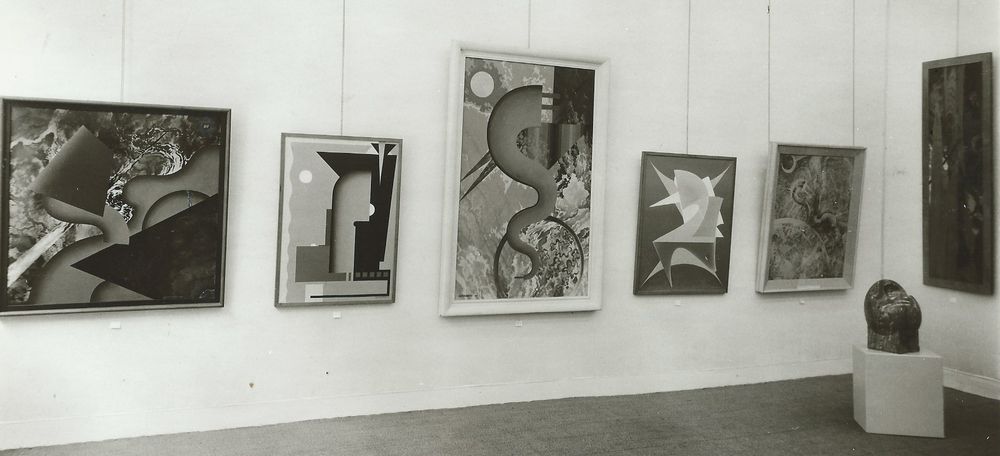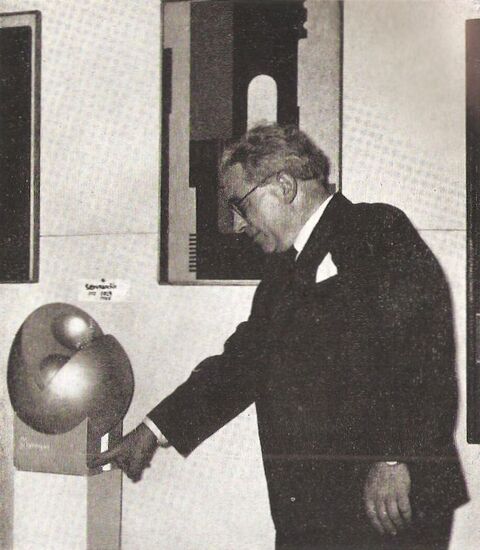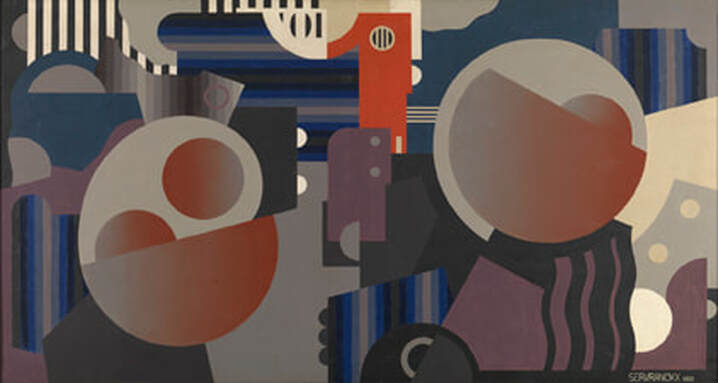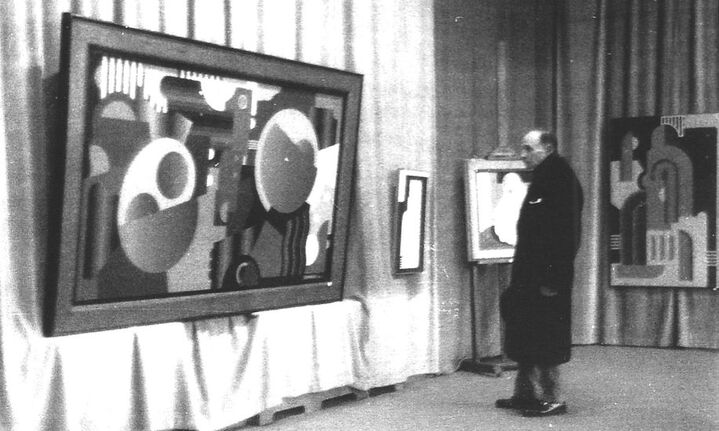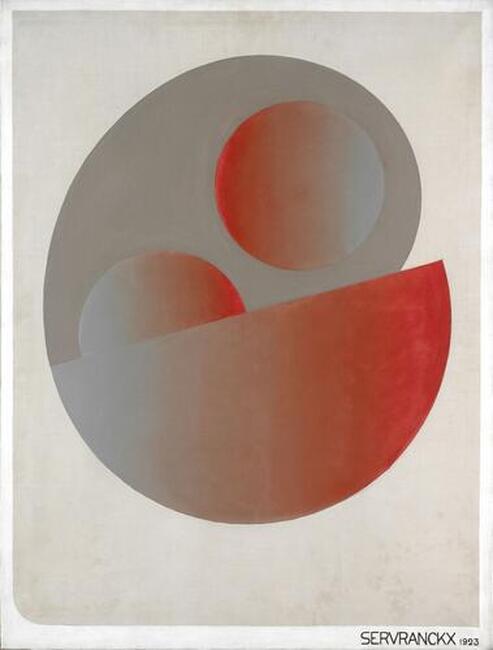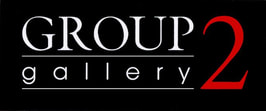VICTOR SERVRANCKX
Sculptures
Victor Servranckx (1897-1965) and his iconic sculpture "Opus 1 1921"
"Expression de plénitude dans la tendresse. Compénétration d'espace négatif dans le temps, quatrième dimension.
Compénétration d'espace et de durée. Totalisation d'espace-durée" Victor Servranckx
"Expression de plénitude dans la tendresse. Compénétration d'espace négatif dans le temps, quatrième dimension.
Compénétration d'espace et de durée. Totalisation d'espace-durée" Victor Servranckx
Invitation card for Servranckx's first solo exhibition at Galerie Royale, Brussels 1924.
Group exhibition "Cubism" with Baumeister, Braque, Gris, Klee, Léger, Lipchitz, Metzinger, Picasso, Servranckx, Zadkine
at Galerie La Boétie, Brussels 1946.
at Galerie La Boétie, Brussels 1946.
Excerpt from "Von Material zu Architektur" by L. Moholy-Nagy, Bauhaus Bücher, Walter Gropius, Munich 1929
László Moholy-Nagy (1895-1946) was a famous hungarian painter-sculptor who taught at the Bauhaus school in Weimar in the 1920's and who founded in 1939 the "New Bauhaus" in Chicago, nowadays the School of Design. In 1939 Servranckx traveled to Mexico, Cuba and the US where he met Moholy-Nagy. He received an offer to teach at the "New Bauhaus" which he declined.
László Moholy-Nagy (1895-1946) was a famous hungarian painter-sculptor who taught at the Bauhaus school in Weimar in the 1920's and who founded in 1939 the "New Bauhaus" in Chicago, nowadays the School of Design. In 1939 Servranckx traveled to Mexico, Cuba and the US where he met Moholy-Nagy. He received an offer to teach at the "New Bauhaus" which he declined.
"Opus 1" 1921, painted plaster, 41 x 37 cm x 37 cm
Collection of the Fine Arts museum of Ghent, Belgium
Collection of the Fine Arts museum of Ghent, Belgium
"Opus 1 1921", white plaster
Collection of the Grenoble museum, France
In 1927 the Grenoble museum organized an exhibition about belgian modern art with a.o. works by Servranckx.
"Opus 1 se présente comme une sphère amputée du quart de son volume s'ouvrant en une forme ovoïde qui dévoile à son tour deux demi-sphères ; une en volume et une en creux. Une tension spatiale s'exerce entre le plein et le vide, entre le positif et le négatif. Ces rapports d'opposition ont aussi une portée symbolique en lien avec les oeuvres antérieures de l'artiste. Le volume plein, pôle masculin, fusionne avec le volume en creux, pôle féminin, pour donner la vie, incarnée dans ce qui s'apparente à un oeuf. Cette image de la naissance évoque également celle du mouvement au sein d'une oeuvre en trois dimensions". Source : Musée de Grenoble
Collection of the Grenoble museum, France
In 1927 the Grenoble museum organized an exhibition about belgian modern art with a.o. works by Servranckx.
"Opus 1 se présente comme une sphère amputée du quart de son volume s'ouvrant en une forme ovoïde qui dévoile à son tour deux demi-sphères ; une en volume et une en creux. Une tension spatiale s'exerce entre le plein et le vide, entre le positif et le négatif. Ces rapports d'opposition ont aussi une portée symbolique en lien avec les oeuvres antérieures de l'artiste. Le volume plein, pôle masculin, fusionne avec le volume en creux, pôle féminin, pour donner la vie, incarnée dans ce qui s'apparente à un oeuf. Cette image de la naissance évoque également celle du mouvement au sein d'une oeuvre en trois dimensions". Source : Musée de Grenoble
"Opus 1" 1921, bronze casting
Acquired in 1961 by the Museum Moderner Kunst Stiftung Ludwig, Vienna
Acquired in 1961 by the Museum Moderner Kunst Stiftung Ludwig, Vienna
"Opus 1 1921 - Femininity - Maternity - Birth", onyx marble, 41 x 37 x 27 cm. Unique piece.
Signed Servranckx and dated 1921 on the base at the left.
Available. Contact us for more information : 0032 2 539.23.09 - [email protected]
Litterature : "7 Arts" magazine no 8, 1923; Cover of the "Nova Generazia" magazine, Kiev, november 1928;
László Moholy-Nagy, "Von Material zu Architektur", Munich 1929; S. Goyens de Heusch, 7 Arts Brussels 1922-1939.
Exhibitions : Galerie Apollo Brussels 1946, exhibition Herbin-Servranckx, Palais des Beaux-Arts Brussels, Servranckx retrospective, 1947, Illustration in the catalogue with foreword by Léonce Rosenberg; Salon d'Automne Paris 1948, Galerie Les Contemporains Brussels, 1957, illustration in the catalogue, Ixelles museum Brussels, 1965, Servranckx retrospective, ill. in the catalogue,
Royal Museum of Fine Arts, Brussels 1989 "Servranckx and abstract art", illustration in the catalogue.
The artist commented this iconic sculpture as follows :
"Expression de plénitude dans la tendresse. Compénétration d'espace négatif dans le temps, quatrième dimension. Compénétration d'espace et de durée. Totalisation d'espace durée. Cette sculpture, posée sur un socle pivotant, auquel est donné un mouvement de rotation, produit à tout moment et à toute face la même impression d'ensemble : les volumes devant accrocher le regard, étant répartis selon un rythmique fondée sur le éléments de durée de la quatrième dimension, en même temps que sur les valeurs réciproques de volume-matière (positif) et de volume-espace (négatif) :
plein et vide autour". Victor Servranckx
Signed Servranckx and dated 1921 on the base at the left.
Available. Contact us for more information : 0032 2 539.23.09 - [email protected]
Litterature : "7 Arts" magazine no 8, 1923; Cover of the "Nova Generazia" magazine, Kiev, november 1928;
László Moholy-Nagy, "Von Material zu Architektur", Munich 1929; S. Goyens de Heusch, 7 Arts Brussels 1922-1939.
Exhibitions : Galerie Apollo Brussels 1946, exhibition Herbin-Servranckx, Palais des Beaux-Arts Brussels, Servranckx retrospective, 1947, Illustration in the catalogue with foreword by Léonce Rosenberg; Salon d'Automne Paris 1948, Galerie Les Contemporains Brussels, 1957, illustration in the catalogue, Ixelles museum Brussels, 1965, Servranckx retrospective, ill. in the catalogue,
Royal Museum of Fine Arts, Brussels 1989 "Servranckx and abstract art", illustration in the catalogue.
The artist commented this iconic sculpture as follows :
"Expression de plénitude dans la tendresse. Compénétration d'espace négatif dans le temps, quatrième dimension. Compénétration d'espace et de durée. Totalisation d'espace durée. Cette sculpture, posée sur un socle pivotant, auquel est donné un mouvement de rotation, produit à tout moment et à toute face la même impression d'ensemble : les volumes devant accrocher le regard, étant répartis selon un rythmique fondée sur le éléments de durée de la quatrième dimension, en même temps que sur les valeurs réciproques de volume-matière (positif) et de volume-espace (négatif) :
plein et vide autour". Victor Servranckx
From 1922 to 1925 Servranckx corresponded with Filippo Marinetti, the "Pope" of Futurism. Marinetti wrote about his visit to the exhibition "Seconda Mostra Internazionale delle Arti Decorative" (1925) in Monza, where he above all enjoyed the sculpture Opus 1 1921..
Catalogue of the Servranckx exhibition at the Palais des Beaux-Arts, 1947
Preface by Léonce Rosenberg
Preface by Léonce Rosenberg
Exhibition at Galerie des Contemporains, Brussels 1957. The onyx marble sculpture is at the far right.
Exhibition at the Bruges Concert Hall, 1958
"Opus 47 1923 - exaltation of machinery", oil on canvas, 113 x 210,5, is rightly considered as Servranckx's masterpiece.
Collection of the Royal Museum of Fine Arts of Belgium, Brussels.
The ovoïd form of "Opus 1 1921" appears twice in this monumental painting.
Collection of the Royal Museum of Fine Arts of Belgium, Brussels.
The ovoïd form of "Opus 1 1921" appears twice in this monumental painting.
Léonce Rosenberg (1879-1947) admiring "Opus 47 1923" at Galerie Apollo in Brussels, october 1946 (Exhibition Herbin-Servranckx)
in 1918 Servranckx showed his work at Rosenberg's gallery “L'Effort Moderne” in Paris, where he met a.o. Filippo Tommaso Marinetti,
Theo van Doesburg, Fernand Léger and Marcel Duchamp. Due to his acquaintance with Duchamp, Servranckx particpated in the "International Exhibition of Modern art" organized in 1926/27 by the "Société Anonyme" (Katherine Dreier) in the Brooklyn museum, NY and in the Art Gallery of Ontario in Toronto, Canada.
in 1918 Servranckx showed his work at Rosenberg's gallery “L'Effort Moderne” in Paris, where he met a.o. Filippo Tommaso Marinetti,
Theo van Doesburg, Fernand Léger and Marcel Duchamp. Due to his acquaintance with Duchamp, Servranckx particpated in the "International Exhibition of Modern art" organized in 1926/27 by the "Société Anonyme" (Katherine Dreier) in the Brooklyn museum, NY and in the Art Gallery of Ontario in Toronto, Canada.
"Opus 53 1923", oil on canvas, 92 x 70 cm
Collection of the Ixelles museum, Brussels
Dans un dégradé entre gris et rouge, plusieurs cercles, entiers ou demi coupés, entrent en collision. On pourrait y voir la palette d’un peintre, ou des planètes agglomérées avec leurs satellites. La peinture évoque aussi les représentations de machines, telles que peintes par Fernand Léger. «Les lois géométriques, c’est ce qui relie les hommes, c’est la plate-forme où tous les hommes peuvent se rencontrer; c’est un terrain d’entente pour un art collectif possible. La forme géométrique exclut l’individualisme particulariste». Victor Servranckx
Source : Ixelles museum, Belgium
Collection of the Ixelles museum, Brussels
Dans un dégradé entre gris et rouge, plusieurs cercles, entiers ou demi coupés, entrent en collision. On pourrait y voir la palette d’un peintre, ou des planètes agglomérées avec leurs satellites. La peinture évoque aussi les représentations de machines, telles que peintes par Fernand Léger. «Les lois géométriques, c’est ce qui relie les hommes, c’est la plate-forme où tous les hommes peuvent se rencontrer; c’est un terrain d’entente pour un art collectif possible. La forme géométrique exclut l’individualisme particulariste». Victor Servranckx
Source : Ixelles museum, Belgium

